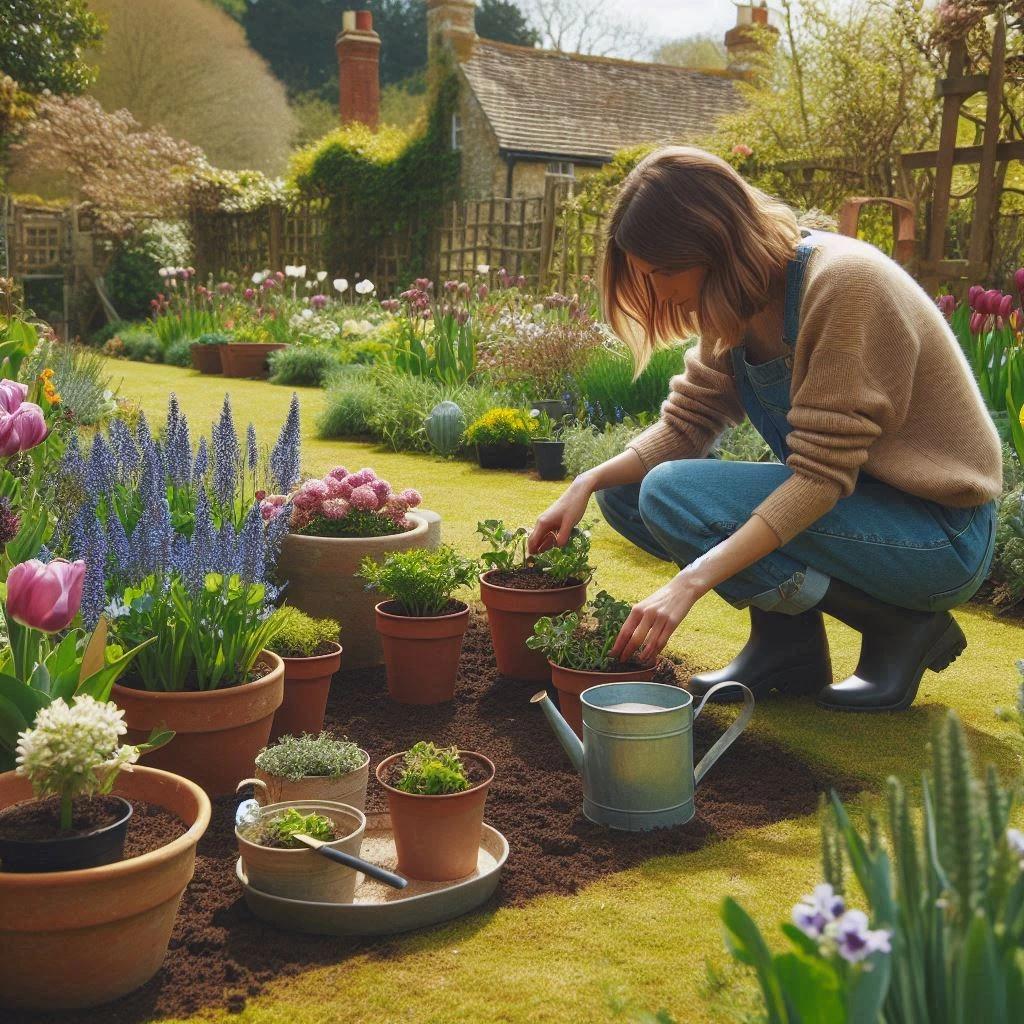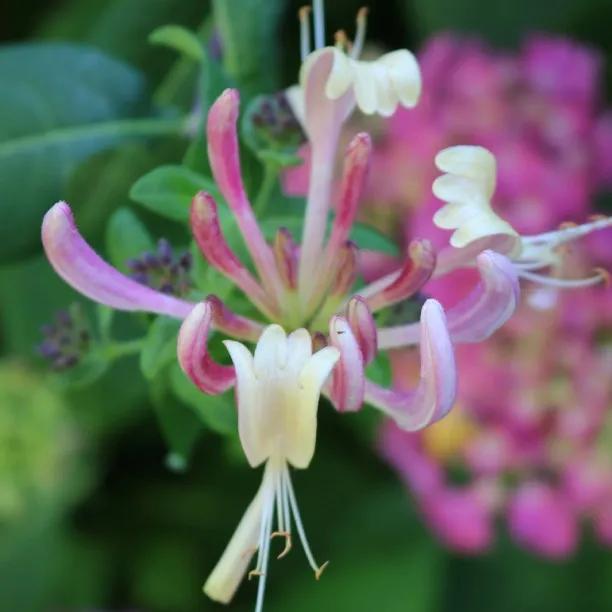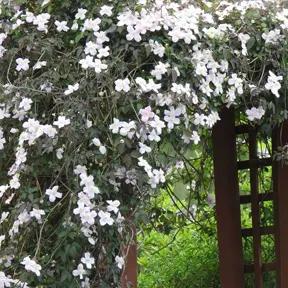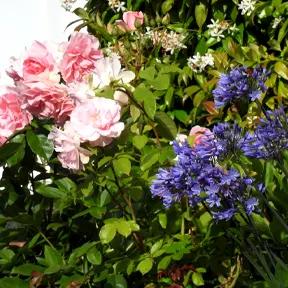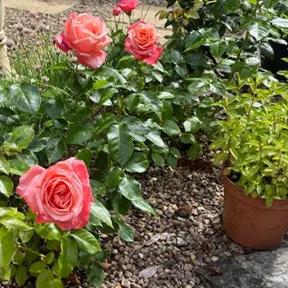American Honeysuckle Plants
Lonicera x americana
- Evergreen, dark green leaves
- Lovely purplish red tubular flowers
- Red ornamental berries
- Full hardy
- Needs support. To 8m.
- Sun or partial shade
Description
American Honeysuckle Plants. Lonicera x americana
Strongly scented flowers start off cream-yellow as they begin to open, quickly blushing dark pink-purple on the outer parts. To 6m x 2m.
Browse our variety of honeysuckle or our full range of climbing plants.
Features:
- Evergreen, elongated, dark green leaves
- Lovely yellow and dark pink tubular flowers in May to July
- To 6m x 2m
- Fully hardy
- Needs support
- Rabbit and deer resistant.
- Sun or partial shade
Growing American Honeysuckle
It is deer, rabbit and windproof and will, therefore, prove perfect for siting in an exposed or woodland position where it could cover a fence or tree stump. It can also be used to cover pergolas, arches and boundary walls. It is a woodland and cottage garden plant not suitable for formal planting. It will associate well with other Lonicera varieties and climbing roses.
Did You Know?
This naturally occurring hybrid of Lonicera caprifolium and L. etrusca is probably not American in origin (both parents are European natives that have widely naturalised in North America), and there was clearly some confusion over its classification from the get-go in 1730, when Linnaeus lumped it in with L. caprifolium. Either way, it is not common in the wild because although the parents grow in the same regions, they prefer quite different habitats.
Planting Instructions
How to grow Lonicera americana
Best planted where the roots have a shady run although it will be happy in any situation and with any soil pH.
- It is quite loose and spreading in habit so choose a spot where it has room to expand.
- Plant it in a hole larger than the rootball.
- Backfill with good quality compost, having incorporated a handful of bonemeal.
- Firm in well and water.
- Prune by 1/3rd after flowering and remove any untidy growth.
Look out for:
May be susceptible to mildew and aphids but it rarely causes a severe problem. Because of the plant's attraction for insects and bees it is inadvisable to use chemical sprays.
It's Summer Planting Season 2025

Pot Grown & Plug Plants Delivered

Direct from the Nursery Value

No more broken plants in the post!
